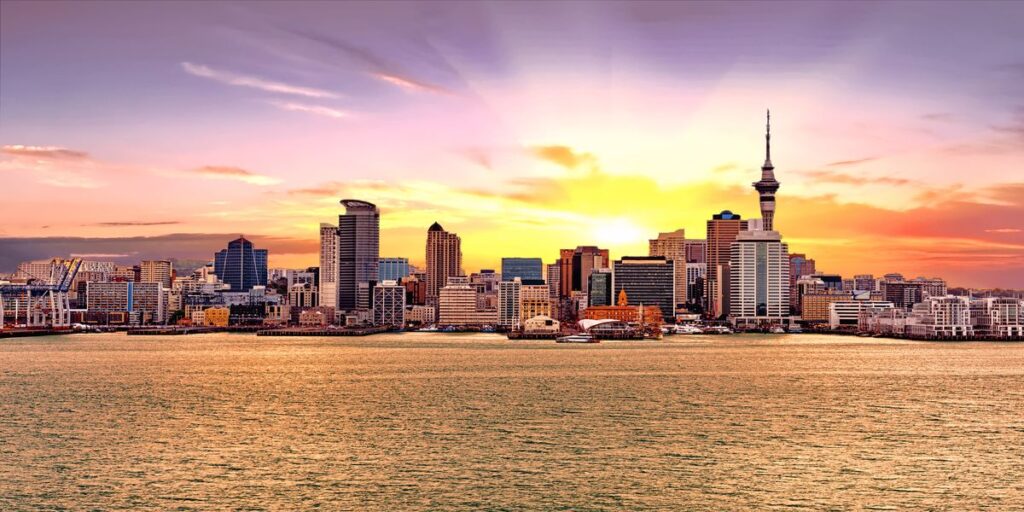🗾 Introduction to The Biggest Cities in New Zealand
New Zealand, a land of breathtaking landscapes and diverse cultures, is home to vibrant cities that reflect the country’s unique blend of tradition and modernity.
This guide delves into the Population, ethnic makeup, economic vitality, and captivating attractions that define these urban landscapes.
Embark with us on a journey through the 10 biggest cities in New Zealand, each offering its distinctive character and charm!
1. Auckland: The Largest Urban Hub
🏙️ Population
Auckland is New Zealand’s largest city, boasting a population exceeding 1.6 million. Its urban expanse is a testament to the dynamic and bustling lifestyle that defines this thriving metropolis.
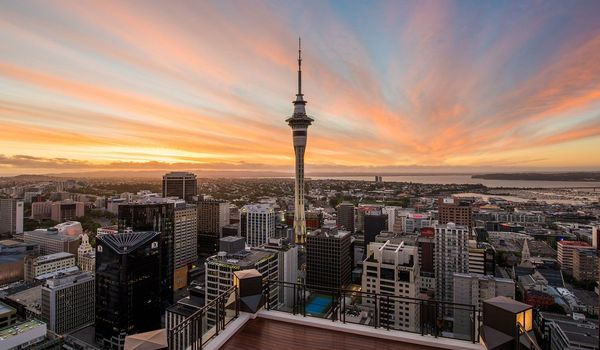
🌐 Ethnicity
Auckland is a melting pot of ethnicities, representing a microcosm of the nation’s diversity.
The city is home to a significant Maori and Pacific Islander community alongside a mosaic of European, Asian, and Middle Eastern populations.
💼 Economy and Industry
At the economic forefront, Auckland serves as the nation’s powerhouse. It hosts the most prominent businesses and industries in New Zealand, making it a hub for finance, commerce, and technology.
The city’s skyline reflects architectural prowess and symbolizes its vital role in the country’s economic landscape.
💰 Cost of Living
Auckland’s cost of living is relatively high compared to other New Zealand cities, driven primarily by housing expenses.
Whether renting or buying, accommodation costs constitute a significant portion of the overall living expenses.
The city’s popularity and economic opportunities contribute to the demand for housing, influencing prices.
🗼 Attractions
- Sky Tower: Auckland’s iconic landmark, offering panoramic views and a thrilling SkyWalk experience.
- Auckland War Memorial Museum: New Zealand’s cultural and natural heritage treasure trove.
- Viaduct Harbour: A lively waterfront precinct with restaurants, bars, and marinas.
- Waiheke Island: A ferry ride away, known for its wineries, beaches, and artistic community.
🥇 Popular Booking Experiences
* Please refer to the operator’s website for additional information
2. Wellington: The Capital City with Cultural Flair
🏙️ Population
Wellington, the capital city, has a population of around 420,000 people. Despite being smaller than Auckland, it is a vibrant cultural and political center.

🌐 Ethnicity
Wellington has a diverse population, with a significant European majority. It also has a notable Maori and Pacific Islander community, contributing to its rich cultural fabric.
💼 Economy and Industry
Wellington is the political center of New Zealand, hosting the government and various public sector organizations. It also has a thriving arts and creative industry, making it a hub for filmmakers and artists.
🗼 Attractions
The city is known for its picturesque waterfront, Te Papa Tongarewa (the national museum), and the iconic Beehive building. Wellington’s vibrant arts scene, including the Wellington International Film Festival, attracts creative minds.
💰 Cost of Living
While Wellington’s cost of living is high, it is often considered slightly more affordable than Auckland. Housing costs can still be a significant factor for residents.
🥇 Popular Booking Experiences
* Please refer to the operator’s website for additional information
3. Christchurch: The Garden City Rebuilding Strong
🏙️ Population
Christchurch has a population of around 380,000, making it the largest city in the South Island. It has undergone significant rebuilding following the 2011 earthquake.

🌐 Ethnicity
The population is predominantly European, with a growing Maori and Pacific Islander presence.
The city has seen an increase in diversity due to post-earthquake migration.
💼 Economy and Industry
Christchurch has a diverse economy, with agriculture, manufacturing, and technology sectors playing crucial roles.
The city’s rebuilding efforts have stimulated construction and infrastructure development.
🗼 Attractions
Christchurch is known for its beautiful gardens, including the Christchurch Botanic Gardens and Hagley Park.
The Christchurch Art Gallery, the Canterbury Museum, and the innovative Cardboard Cathedral are notable landmarks.
💰 Cost of Living
Christchurch has a slightly lower cost of living compared to Auckland and Wellington. The post-earthquake reconstruction has influenced housing availability and prices.
🥇 Popular Booking Experiences
* Please refer to the operator’s website for additional information
4. Hamilton: The Hub of Education and Agriculture
🏙️ Population
Hamilton, located in the Waikato region, has a population of around 180,000. It is known for its educational institutions and strong ties to the agricultural sector.
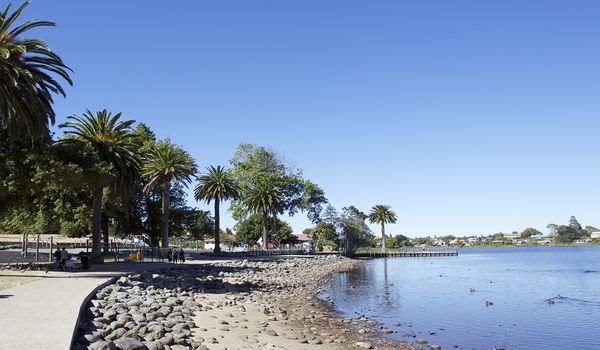
🌐 Ethnicity
Hamilton has a diverse population, with a significant European majority.
The city also has a growing Maori community, reflecting the broader demographic trends in New Zealand.
💼 Economy and Industry
Agriculture, agribusiness, and education are central to Hamilton’s economy.
The University of Waikato and Waikato Institute of Technology contribute to the city’s educational prominence.
🗼 Attractions
The Hamilton Gardens, Waikato Museum, and the iconic Hobbiton Movie Set (located nearby) are popular attractions.
The Waikato River and surrounding natural landscapes offer recreational opportunities.
💰 Cost of Living
Hamilton, located in the Waikato region, has a population of around 180,000. It is known for its educational institutions and strong ties to the agricultural sector.
🥇 Popular Booking Experiences
* Please refer to the operator’s website for additional information
5. Tauranga: Coastal Gem and Growing Urban Center
🏙️ Population
Tauranga, located in the Bay of Plenty, has a population of around 160,000. It is one of the fastest-growing cities in New Zealand.
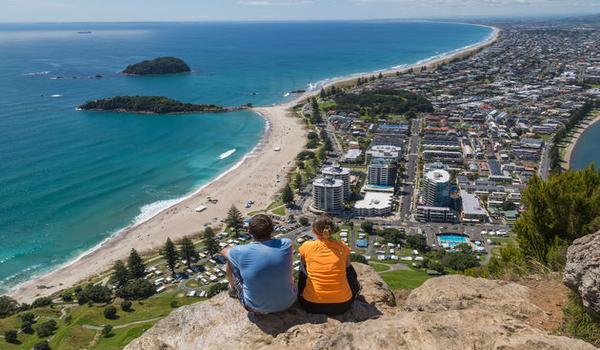
🌐 Ethnicity
Tauranga has a predominantly European population, with a growing Maori and Pacific Islander community. The city’s growth has attracted residents from various backgrounds.
💼 Economy and Industry
Its port, horticulture, and tourism drive the city’s economy. Tauranga is a central export hub, handling much of New Zealand’s trade.
🗼 Attractions
Tauranga is known for its beautiful beaches, Mount Maunganui, and vibrant cultural scene. The Elms Mission House, Tauranga Art Gallery, and local markets add to the city’s charm.
💰 Cost of Living
Tauranga’s cost of living has risen due to its popularity and growth. While still more affordable than in some larger cities, housing affordability can be a consideration for residents.
🥇 Popular Booking Experiences
* Please refer to the operator’s website for additional information
6. Dunedin: Heritage and Nature in the South
🏙️ Population
Dunedin, located in the Otago region, has a population of around 130,000. It is known for its Scottish heritage and stunning natural landscapes.
🌐 Ethnicity
The city has a predominantly European population with a significant Maori presence. Dunedin’s historical ties contribute to its unique cultural character.
💼 Economy and Industry
Dunedin has a diverse economy with strengths in education, tourism, and healthcare. The University of Otago is a prominent institution in the city.
🗼 Attractions
Dunedin is famous for its Victorian and Edwardian architecture, such as the Dunedin Railway Station. The Otago Peninsula, home to diverse wildlife, is a major attraction.
💰 Cost of Living
Dunedin is often considered more affordable than larger cities. The cost of living, including housing, tends to be lower.
🥇 Popular Booking Experiences
* Please refer to the operator’s website for additional information
7. Palmerston North: Education Hub in the Heartland
🏙️ Population
Palmerston North, located in the Manawatu-Wanganui region, has a population of around 140,000. It is known for its educational institutions and agricultural connections.
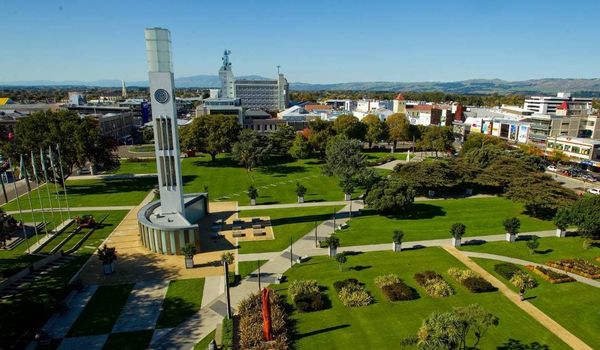
🌐 Ethnicity
The city has a diverse population with a significant European majority. It also has a growing Maori community and an international student presence.
💼 Economy and Industry
Palmerston North’s economy is driven by education, research, and agriculture. Massey University, located in the city, is a major contributor.
🗼 Attractions
The Victoria Esplanade Gardens, Te Manawa Museum, and the New Zealand Rugby Museum are popular attractions.
The city’s central location makes it a convenient base for exploring the North Island.
💰 Cost of Living
Palmerston North generally has a more moderate living cost than larger urban centres. Housing costs are relatively affordable.
🥇 Popular Booking Experiences
* Please refer to the operator’s website for additional information
8. New Plymouth: Art, Surf, and Mount Taranaki
🏙️ Population
New Plymouth, located in the Taranaki region, has a population of around 80,000. It is known for its vibrant arts scene, surf beaches, and the iconic Mount Taranaki.
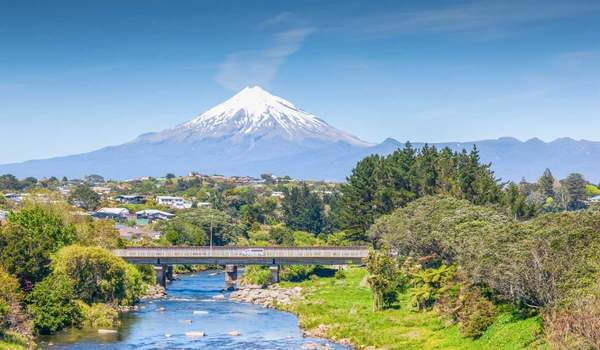
🌐 Ethnicity
The city has a diverse population with a European majority. The Maori presence is significant, and the region historically ties to the Taranaki iwi.
💼 Economy and Industry
Oil and gas, agriculture, and tourism influence New Plymouth’s economy. The city’s coastal location and cultural attractions draw visitors.
🗼Attractions
The Len Lye Centre, Pukekura Park, and the Coastal Walkway are popular attractions. Mount Taranaki, an active stratovolcano, is a prominent landscape feature.
💰 Cost of Living
New Plymouth generally offers a moderate cost of living. Housing costs, while increasing, are still relatively reasonable compared to larger cities.
9. Napier-Hastings: Art Deco and Wine Country
🏙️ Population
The Napier-Hastings urban area in Hawke’s Bay has a combined population of around 150,000. It is known for its Art Deco architecture and thriving wine industry.
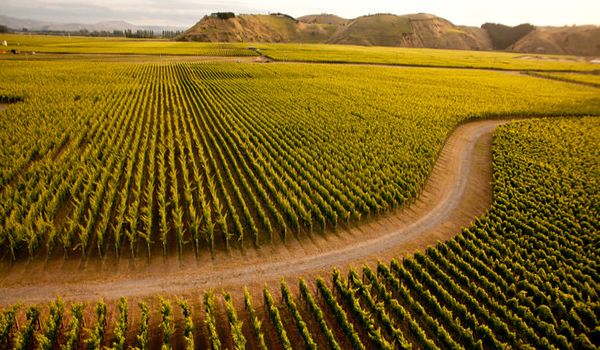
🌐 Ethnicity
The population is predominantly European, with a growing Maori community. The region’s cultural events and festivals contribute to its vibrancy.
💼 Economy and Industry
Napier-Hastings is a hub for horticulture, viticulture, and tourism. The Art Deco architecture in Napier attracts history and architecture enthusiasts.
🗼Attractions
The Art Deco Festival, Mission Estate Winery, and Cape Kidnappers are notable attractions. The region’s wineries and landscapes add to its appeal.
💰 Cost of Living
The cost of living in Napier-Hastings is generally moderate. Housing costs may vary but are often more affordable compared to larger cities.
🥇 Popular Booking Experiences
* Please refer to the operator’s website for additional information
10. Rotorua: Geothermal Wonders and Maori Culture
🏙️ Population
Rotorua, located in the Bay of Plenty, has a population of around 75,000. It is renowned for its geothermal features and rich Maori cultural experiences.
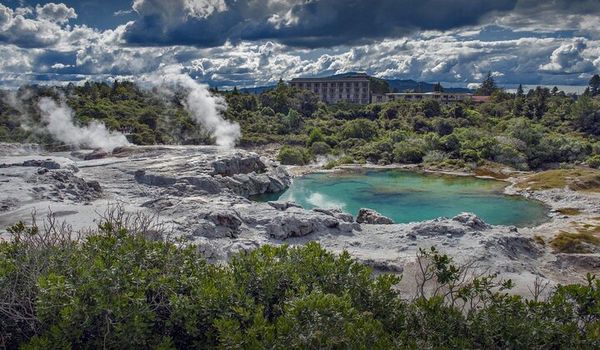
🌐 Ethnicity
Rotorua has a diverse population, with a significant Maori presence. The city’s cultural events and geothermal attractions draw both residents and tourists.
💼 Economy and Industry
Rotorua’s economy is driven by tourism, forestry, and agriculture. The geothermal activity, including geysers and hot springs, is a major tourist attraction.
🗼Attractions
Popular attractions include Te Puia, Wai-O-Tapu Thermal Wonderland, and the Redwoods Forest.
Rotorua offers a unique blend of natural wonders and cultural experiences.
💰 Cost of Living
Rotorua generally offers a more affordable cost of living. Housing costs are often lower than in larger cities, making it an attractive option for some residents.
🥇 Popular Booking Experiences
* Please refer to the operator’s website for additional information
👨💻 Frequently Asked Questions (FAQ) about The Biggest Cities in New Zealand
1. What are the biggest cities in New Zealand?
The biggest cities in New Zealand include Auckland, Wellington, Christchurch, Hamilton, Tauranga, Dunedin, Palmerston North, New Plymouth, Napier-Hastings, and Rotorua.
2. Which city is the largest in terms of population?
Auckland is the largest city in New Zealand in terms of population, with over 1.6 million residents.
3. What is the cultural diversity like in Auckland?
Auckland is known for its cultural diversity, with a significant Maori and Pacific Islander community and European, Asian, and Middle Eastern populations.
4. Which city is the capital of New Zealand?
Wellington is the capital city of New Zealand.
5. How does the cost of living in Auckland compare to other cities?
Generally, the cost of living in smaller cities and rural areas is lower than in major urban centres like Auckland and Wellington. However, job opportunities and amenities may vary.
6. What industries drive Auckland’s economy?
Auckland’s diverse economy focuses on finance, commerce, and technology. It serves as the economic hub of New Zealand, hosting the country’s largest businesses and industries.
7. Are there affordable housing options in Auckland?
While housing costs in Auckland are relatively high, there are varying options, and affordability depends on location and housing type. Suburban areas may offer more affordable options compared to the city centre.
8. Which city is known for its cultural and political significance?
Wellington is renowned for its cultural and political significance as the capital city of New Zealand. It houses government institutions and is a hub for the arts and creative industries.
9. What are some popular attractions in Christchurch?
Christchurch is known for attractions such as the Christchurch Botanic Gardens, Hagley Park, the Cardboard Cathedral, and the Canterbury Museum.
10. How does the cost of living in smaller cities compare to larger ones?
Generally, the cost of living in smaller cities and rural areas is lower than in major urban centers like Auckland and Wellington. However, job opportunities and amenities may vary.
11. Are there opportunities for outdoor activities in New Zealand’s cities?
Yes, New Zealand cities offer a range of outdoor activities. For example, Auckland has beaches and islands, Wellington has hiking trails, and Christchurch is close to the Southern Alps.
12. Is public transportation available in New Zealand’s biggest cities?
Public transportation is available in major cities, including buses and trains. Auckland, Wellington, and Christchurch have well-developed public transport systems.



